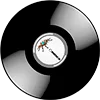Showbiz News | Page: 4
Drill & Bass — chaos and speed in IDM
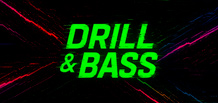 Drill & Bass is a subgenre of electronic music that emerged in the mid-1990s as an experimental offshoot of drum and bass. It is characterized by excessively complex rhythms, "broken" drum patterns, and chaotic track structures. In essence, it is a parodic yet brilliant reimagining of drum and bass in an avant-garde spirit.
History
The genre originated in the UK within the IDM (Intelligent Dance Music) movement.
It is often attributed to Aphex Twin (the album Richard D. James Album, 1996), where traditional drum and bass was pushed to absurd extremes through abrupt accelerations, sample slicing, and glitch effects.
Following him, the style was further developed by Squarepusher, µ-Ziq, and Venetian Snares.
Sound Characteristics
Rhythm: extremely fast and "broken" drums w...
Drill & Bass is a subgenre of electronic music that emerged in the mid-1990s as an experimental offshoot of drum and bass. It is characterized by excessively complex rhythms, "broken" drum patterns, and chaotic track structures. In essence, it is a parodic yet brilliant reimagining of drum and bass in an avant-garde spirit.
History
The genre originated in the UK within the IDM (Intelligent Dance Music) movement.
It is often attributed to Aphex Twin (the album Richard D. James Album, 1996), where traditional drum and bass was pushed to absurd extremes through abrupt accelerations, sample slicing, and glitch effects.
Following him, the style was further developed by Squarepusher, µ-Ziq, and Venetian Snares.
Sound Characteristics
Rhythm: extremely fast and "broken" drums w...
Chiptune — 8-bit Music and Its History
 Chiptune (or 8-bit music) is a genre of electronic music based on the sound of audio chips from old game consoles and computers. Its recognizable "pixelated" sound became a symbol of the arcade era, Nintendo, Sega, and Commodore. Today, Chiptune exists both in its original form and as modern remixes and live performances.
History
1970s–80s: the first sound chips (SID on the Commodore 64, PSG on the Sega, Ricoh 2A03 on the NES) limited music to 3–4 channels and simple waveforms.
Game composers such as Koji Kondo (Super Mario Bros., The Legend of Zelda) and Rob Hubbard (Commodore 64 games) made the music of these chips iconic.
In the 1990s, Chiptune evolved within the demoscene — a community of programmers and musicians creating music directly in code.
Sound charact...
Chiptune (or 8-bit music) is a genre of electronic music based on the sound of audio chips from old game consoles and computers. Its recognizable "pixelated" sound became a symbol of the arcade era, Nintendo, Sega, and Commodore. Today, Chiptune exists both in its original form and as modern remixes and live performances.
History
1970s–80s: the first sound chips (SID on the Commodore 64, PSG on the Sega, Ricoh 2A03 on the NES) limited music to 3–4 channels and simple waveforms.
Game composers such as Koji Kondo (Super Mario Bros., The Legend of Zelda) and Rob Hubbard (Commodore 64 games) made the music of these chips iconic.
In the 1990s, Chiptune evolved within the demoscene — a community of programmers and musicians creating music directly in code.
Sound charact...
t.A.T.u. are back — the legendary duo reunites
 "Everything and about everything — in our eyes, and beyond. Ahead lies much that is new and exciting. Let’s go!" — this is how Yulia Volkova and Elena Katina announced the reunion of the legendary duo t.A.T.u..
For millions of fans around the world, this became an event comparable to a return to their youth: the daring energy of the 2000s came alive again, but in a new, more mature and meaningful format.
"We are not starting over — we are continuing"
According to Yulia, this is not a “second wind,” but a natural continuation of the story:
"There is no need to start over. We are simply continuing. The same strength and emotions that lived in us twenty years ago are still there, but now we know how to channel them into music differently — deeper, st...
"Everything and about everything — in our eyes, and beyond. Ahead lies much that is new and exciting. Let’s go!" — this is how Yulia Volkova and Elena Katina announced the reunion of the legendary duo t.A.T.u..
For millions of fans around the world, this became an event comparable to a return to their youth: the daring energy of the 2000s came alive again, but in a new, more mature and meaningful format.
"We are not starting over — we are continuing"
According to Yulia, this is not a “second wind,” but a natural continuation of the story:
"There is no need to start over. We are simply continuing. The same strength and emotions that lived in us twenty years ago are still there, but now we know how to channel them into music differently — deeper, st...
Italo Disco — History of the Genre, Best Hits and Artists
 Italo Disco — is a genre of disco and synth-pop that emerged in Italy in the early 1980s and became one of the main symbols of the European dance scene. Bright synthesizers, romantic melodies, dramatic vocals, and dance rhythms made this style iconic to this day.
History
Origins: the genre appeared in Italy around 1982, when local producers began recording disco tracks using synthesizers and drum machines.
The name "Italo Disco" was introduced by the German label Zyx Records, which in 1983 began releasing compilations of Italian disco music.
The music quickly gained popularity not only in Italy but also in Germany, Spain, Switzerland, and the USSR (where Italo Disco was actively played at 80s discos).
Sound Characteristics
Synthesizers: bright melodies and bass lines.
Dru...
Italo Disco — is a genre of disco and synth-pop that emerged in Italy in the early 1980s and became one of the main symbols of the European dance scene. Bright synthesizers, romantic melodies, dramatic vocals, and dance rhythms made this style iconic to this day.
History
Origins: the genre appeared in Italy around 1982, when local producers began recording disco tracks using synthesizers and drum machines.
The name "Italo Disco" was introduced by the German label Zyx Records, which in 1983 began releasing compilations of Italian disco music.
The music quickly gained popularity not only in Italy but also in Germany, Spain, Switzerland, and the USSR (where Italo Disco was actively played at 80s discos).
Sound Characteristics
Synthesizers: bright melodies and bass lines.
Dru...
Ambient Breaks — a style at the intersection of ambient and breakbeat
 Ambient Breaks is a subgenre of electronic music that combines the meditative, spacious textures of ambient with the rhythmic patterns of breakbeat. This style appeared in the 1990s, when DJs and producers began experimenting with smooth soundscapes and irregular drum parts.
History and Development
The roots of Ambient Breaks lie in Brian Eno’s ambient music and the breakbeats of the early rave scenes.
In the 1990s, the style developed actively on labels releasing downtempo, trip-hop, and early chillout.
Ambient Breaks was often used as music for after-parties, lounge zones, and chillout rooms at raves.
Sound Characteristics
Atmosphere: long, extended ambient pads and soft synthesizer layers.
Beats: breakbeats with a moderate tempo (usually 90–120 BPM), sometimes in...
Ambient Breaks is a subgenre of electronic music that combines the meditative, spacious textures of ambient with the rhythmic patterns of breakbeat. This style appeared in the 1990s, when DJs and producers began experimenting with smooth soundscapes and irregular drum parts.
History and Development
The roots of Ambient Breaks lie in Brian Eno’s ambient music and the breakbeats of the early rave scenes.
In the 1990s, the style developed actively on labels releasing downtempo, trip-hop, and early chillout.
Ambient Breaks was often used as music for after-parties, lounge zones, and chillout rooms at raves.
Sound Characteristics
Atmosphere: long, extended ambient pads and soft synthesizer layers.
Beats: breakbeats with a moderate tempo (usually 90–120 BPM), sometimes in...
Berlin School — electronic music movement from Germany
 Berlin School is a style of electronic music that emerged in West Germany in the late 1960s and early 1970s. This style had a huge influence on the development of the entire electronic scene and became the foundation for genres such as ambient, synthwave, new age, and even modern techno.
History
Berlin School arose during the flourishing of krautrock (experimental rock music) in Germany.
Key figures included Klaus Schulze, Tangerine Dream, and Ash Ra Tempel, who began actively using synthesizers, sequencers, and electronics instead of guitar dominance.
Analog synthesizers such as Moog, ARP, and sequencers played a crucial role, allowing musicians to create repetitive rhythmic structures.
Sound and Features
Sequencers and patterns: repeating cycles that gradually evolve.
Atmosph...
Berlin School is a style of electronic music that emerged in West Germany in the late 1960s and early 1970s. This style had a huge influence on the development of the entire electronic scene and became the foundation for genres such as ambient, synthwave, new age, and even modern techno.
History
Berlin School arose during the flourishing of krautrock (experimental rock music) in Germany.
Key figures included Klaus Schulze, Tangerine Dream, and Ash Ra Tempel, who began actively using synthesizers, sequencers, and electronics instead of guitar dominance.
Analog synthesizers such as Moog, ARP, and sequencers played a crucial role, allowing musicians to create repetitive rhythmic structures.
Sound and Features
Sequencers and patterns: repeating cycles that gradually evolve.
Atmosph...
2 Step (UK Garage) — Genre History, Features, and Artists
 2 Step (or 2-Step Garage) is a subgenre of UK Garage that emerged in the late 1990s in the United Kingdom. It is characterized by a shifted, “broken” rhythm, the absence of a standard bass kick on every beat, and an abundance of syncopated patterns. This gives the music a “floating” feel and distinguishes it from classic house and garage.
History
Roots trace back to UK Garage of the mid-90s, which itself evolved from American garage house and jungle.
The first experiments with the two-step rhythm came from producers such as Dem 2, Artful Dodger, and Groove Chronicles.
The peak of popularity occurred in the late 1990s and early 2000s, when 2 Step was heard in charts and clubs across the UK.
Sound Characteristics
Broken rhythm: the kick drum is not placed on...
2 Step (or 2-Step Garage) is a subgenre of UK Garage that emerged in the late 1990s in the United Kingdom. It is characterized by a shifted, “broken” rhythm, the absence of a standard bass kick on every beat, and an abundance of syncopated patterns. This gives the music a “floating” feel and distinguishes it from classic house and garage.
History
Roots trace back to UK Garage of the mid-90s, which itself evolved from American garage house and jungle.
The first experiments with the two-step rhythm came from producers such as Dem 2, Artful Dodger, and Groove Chronicles.
The peak of popularity occurred in the late 1990s and early 2000s, when 2 Step was heard in charts and clubs across the UK.
Sound Characteristics
Broken rhythm: the kick drum is not placed on...
Acid Trance — history, features, and famous artists
 Acid Trance is a subgenre of trance that emerged in the early 1990s at the intersection of acid house and classic trance. It is characterized by the use of the distinctive “acid” sound of the Roland TB-303 synthesizer (with resonant filters and slide effects), combined with a trance structure — gradual build-ups, hypnotic melodies, long bridges, and emotional backgrounds.
Sound Characteristics:
TB-303: buzzing and “acidic” bass patterns.
Tempo: usually between 130 and 150 BPM.
Atmosphere: psychedelic, hypnotic, often more melodic than acid house.
Structure: smooth transitions, long tracks (6–12 minutes), designed for immersion.
History:
Originated in the early 1990s in Europe, particularly in Belgium, Germany, and the United Kingdom.
Develo...
Acid Trance is a subgenre of trance that emerged in the early 1990s at the intersection of acid house and classic trance. It is characterized by the use of the distinctive “acid” sound of the Roland TB-303 synthesizer (with resonant filters and slide effects), combined with a trance structure — gradual build-ups, hypnotic melodies, long bridges, and emotional backgrounds.
Sound Characteristics:
TB-303: buzzing and “acidic” bass patterns.
Tempo: usually between 130 and 150 BPM.
Atmosphere: psychedelic, hypnotic, often more melodic than acid house.
Structure: smooth transitions, long tracks (6–12 minutes), designed for immersion.
History:
Originated in the early 1990s in Europe, particularly in Belgium, Germany, and the United Kingdom.
Develo...
Acid Techno — history, sound, and culture of the genre
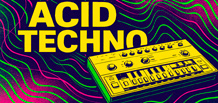 Acid Techno is a subgenre of techno that emerged in the early 1990s in the United Kingdom as a logical evolution of acid house. Its distinctive feature is the use of the legendary Roland TB-303 synthesizer, which creates a “acidic,” distorted bassline sound that became the hallmark of the genre.
History of Acid Techno
The roots of Acid Techno trace back to the late 1980s, when house and techno were rapidly evolving in Chicago and London. Acid house had already become famous for its hypnotic basslines, and British producers sought to give it a harder, more industrial edge.
In the early 1990s, Acid Techno gained popularity in London’s underground clubs and at illegal raves.
Some of the genre’s pioneers include Hardfloor (Germany), Chris Liberator, D.A.V.E. the D...
Acid Techno is a subgenre of techno that emerged in the early 1990s in the United Kingdom as a logical evolution of acid house. Its distinctive feature is the use of the legendary Roland TB-303 synthesizer, which creates a “acidic,” distorted bassline sound that became the hallmark of the genre.
History of Acid Techno
The roots of Acid Techno trace back to the late 1980s, when house and techno were rapidly evolving in Chicago and London. Acid house had already become famous for its hypnotic basslines, and British producers sought to give it a harder, more industrial edge.
In the early 1990s, Acid Techno gained popularity in London’s underground clubs and at illegal raves.
Some of the genre’s pioneers include Hardfloor (Germany), Chris Liberator, D.A.V.E. the D...
Chillwave — music of retro waves and digital dreams
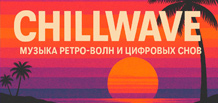 In the world of electronic music, new genres regularly emerge — ones that not only create a fresh sound but also shape an entire atmosphere, mood, and image. One such phenomenon is Chillwave — a style that, since the late 2000s, has become a cult movement for an entire generation of listeners.
What is Chillwave?
Chillwave is a subgenre of electronic music that combines dreamy melodies, vintage synthesizers, expressive use of reverb, and samples reminiscent of the aesthetics of the 1980s and early 1990s. Its core mood is nostalgia and relaxation. That’s why many describe Chillwave as “a soundtrack for summer evenings, childhood memories, or daydreams.”
The music often sounds as if it’s being played through an old cassette tape or VHS — slightly blur...
In the world of electronic music, new genres regularly emerge — ones that not only create a fresh sound but also shape an entire atmosphere, mood, and image. One such phenomenon is Chillwave — a style that, since the late 2000s, has become a cult movement for an entire generation of listeners.
What is Chillwave?
Chillwave is a subgenre of electronic music that combines dreamy melodies, vintage synthesizers, expressive use of reverb, and samples reminiscent of the aesthetics of the 1980s and early 1990s. Its core mood is nostalgia and relaxation. That’s why many describe Chillwave as “a soundtrack for summer evenings, childhood memories, or daydreams.”
The music often sounds as if it’s being played through an old cassette tape or VHS — slightly blur...
Neo-Soul — history, facts, and top artists of the genre
 Neo-Soul is a genre that emerged in the late 1990s as a response to musicians’ desire to blend the traditions of soul, jazz, funk, and R&B with a modern sound. It is characterized by deep lyrics, live instrumentation, and a warm atmosphere, standing in contrast to the commercial mainstream R&B.
History and Origins
The term “neo-soul” began to be actively used in the mid-1990s thanks to producer and musician Kedar Massenburg (who worked with D’Angelo and Erykah Badu). The genre became a platform for artists who wanted to preserve “live” music and emotional depth while adapting it for a new generation of listeners.
The pioneer of the genre is considered to be D’Angelo with his album Brown Sugar (1995), as well as Erykah Badu, whose sound comb...
Neo-Soul is a genre that emerged in the late 1990s as a response to musicians’ desire to blend the traditions of soul, jazz, funk, and R&B with a modern sound. It is characterized by deep lyrics, live instrumentation, and a warm atmosphere, standing in contrast to the commercial mainstream R&B.
History and Origins
The term “neo-soul” began to be actively used in the mid-1990s thanks to producer and musician Kedar Massenburg (who worked with D’Angelo and Erykah Badu). The genre became a platform for artists who wanted to preserve “live” music and emotional depth while adapting it for a new generation of listeners.
The pioneer of the genre is considered to be D’Angelo with his album Brown Sugar (1995), as well as Erykah Badu, whose sound comb...
Alternative Rock — history, artists, and facts
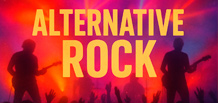 Alternative Rock is one of the most significant and influential movements in modern music. It emerged in the late 1970s – early 1980s as a reaction against the established traditions of mainstream rock. It is characterized by experimentation, genre blending, and a drive for individuality.
History of the Style
The roots of alternative rock lie in post-punk and the independent (indie) scene. The first bands created music outside commercial frameworks, releasing their work on small independent labels. Pioneering bands such as R.E.M., The Cure, Sonic Youth, and Pixies played a key role in shaping the direction of the genre.
A true breakthrough came in the early 1990s with the rise of grunge — a subgenre of alternative rock popularized by Nirvana, Soundgarden, Pearl Jam, and Alice i...
Alternative Rock is one of the most significant and influential movements in modern music. It emerged in the late 1970s – early 1980s as a reaction against the established traditions of mainstream rock. It is characterized by experimentation, genre blending, and a drive for individuality.
History of the Style
The roots of alternative rock lie in post-punk and the independent (indie) scene. The first bands created music outside commercial frameworks, releasing their work on small independent labels. Pioneering bands such as R.E.M., The Cure, Sonic Youth, and Pixies played a key role in shaping the direction of the genre.
A true breakthrough came in the early 1990s with the rise of grunge — a subgenre of alternative rock popularized by Nirvana, Soundgarden, Pearl Jam, and Alice i...
Dancehall: history, artists, and the influence of the Jamaican genre on global music
 Dancehall is more than just a musical genre — it’s a whole culture that was born in Jamaica in the late 1970s. Its rhythms, dances, and performance style have influenced dozens of modern music genres and became the foundation for many global hits.
History of the Genre
The roots of Dancehall go back to Reggae. While reggae was often associated with relaxed, philosophical songs, this new style was created for dancing and parties. Early dancehall recordings featured a faster tempo, a strong emphasis on bass, and the use of riddims — rhythmic backings on which artists layered their own vocal performances.
The term “dancehall” comes from the dance halls — venues where parties were held. In the 1980s, with the development of digital technology and drum machine...
Dancehall is more than just a musical genre — it’s a whole culture that was born in Jamaica in the late 1970s. Its rhythms, dances, and performance style have influenced dozens of modern music genres and became the foundation for many global hits.
History of the Genre
The roots of Dancehall go back to Reggae. While reggae was often associated with relaxed, philosophical songs, this new style was created for dancing and parties. Early dancehall recordings featured a faster tempo, a strong emphasis on bass, and the use of riddims — rhythmic backings on which artists layered their own vocal performances.
The term “dancehall” comes from the dance halls — venues where parties were held. In the 1980s, with the development of digital technology and drum machine...
Acoustic — pure and natural sound
 Acoustic is a musical style where the sound is created primarily through live instruments without electric processing or synthesizers. Its foundation lies in acoustic guitar, piano, violin, and percussion, with arrangements that favor naturalness and minimalism.
History
Ancient times: acoustic music existed long before the invention of electricity — in folk songs, instrumental pieces, and traditional music.
20th century: acoustic performance became a core part of folk, blues, and jazz.
1970s: the “unplugged” era, when artists returned to acoustic sound to capture authenticity and emotional depth.
1990s: the MTV Unplugged format turned acoustic sessions into a mainstream trend — iconic recordings by Nirvana, Eric Clapton, and Alicia Keys became legendary.
K...
Acoustic is a musical style where the sound is created primarily through live instruments without electric processing or synthesizers. Its foundation lies in acoustic guitar, piano, violin, and percussion, with arrangements that favor naturalness and minimalism.
History
Ancient times: acoustic music existed long before the invention of electricity — in folk songs, instrumental pieces, and traditional music.
20th century: acoustic performance became a core part of folk, blues, and jazz.
1970s: the “unplugged” era, when artists returned to acoustic sound to capture authenticity and emotional depth.
1990s: the MTV Unplugged format turned acoustic sessions into a mainstream trend — iconic recordings by Nirvana, Eric Clapton, and Alicia Keys became legendary.
K...
Moombahcore — extreme dancefloor energy
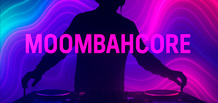 Moombahcore is an aggressive offshoot of moombahton that emerged in the early 2010s. While moombahton is a blend of reggaeton and dubstep with a moderate tempo, moombahcore raises the stakes — adding heavy basslines, sharp synths, and a structure similar to dubstep and electro house.
History
2010–2011: The genre originated as an experiment by DJs who started to intensify the sound of moombahton.
The first tracks were produced by Dillon Francis, Munchi, and artists associated with Mad Decent.
2012–2015: The style gained traction in the EDM scene, appearing at major festivals like EDC and Ultra.
Today: Moombahcore remains niche but highly valued within the rave scene and among fans of heavy electronic music.
Key Characteristics
Tempo: 100–115 BPM (similar ...
Moombahcore is an aggressive offshoot of moombahton that emerged in the early 2010s. While moombahton is a blend of reggaeton and dubstep with a moderate tempo, moombahcore raises the stakes — adding heavy basslines, sharp synths, and a structure similar to dubstep and electro house.
History
2010–2011: The genre originated as an experiment by DJs who started to intensify the sound of moombahton.
The first tracks were produced by Dillon Francis, Munchi, and artists associated with Mad Decent.
2012–2015: The style gained traction in the EDM scene, appearing at major festivals like EDC and Ultra.
Today: Moombahcore remains niche but highly valued within the rave scene and among fans of heavy electronic music.
Key Characteristics
Tempo: 100–115 BPM (similar ...

